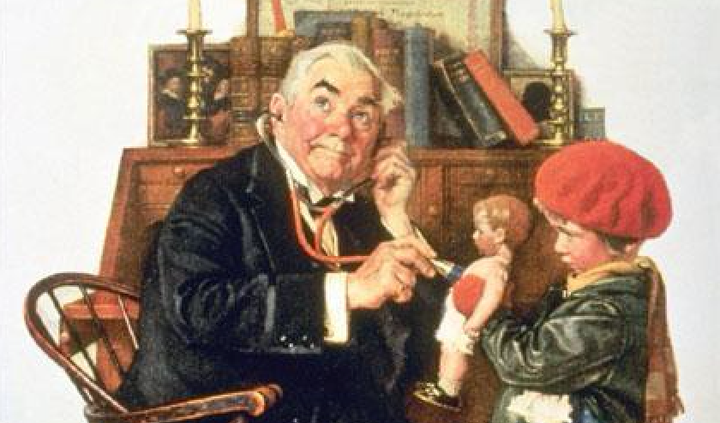
Over half of white women voted for Donald Trump.
Around the same time, I learned I have a strong bias against women in the workplace. Not mild. Not moderate. Strong.
I’m a resident physician at Yale University. I have no children, and was midway through a 28-hour shift when I paused to take Harvard’s Implicit Assumption Test. Still I have a “strong automatic association between women and family, and between men and career.” I was floored.
What other antifeminist sentiments were lurking in my unconscious? How did they get there? Surely not from my ultra-supportive all-girl high school. Or my working parents. Or my husband (who has no gender bias, according to the same test).
But when I started to look for gender bias, I found it everywhere. The most surprising place? Medicine.
Medical research and clinical care have long been dominated by men. In the last century (and for centuries before that), male doctors chalked female illness up to “hysteria,” an unhappy uterus wandering and causing bodily discord.
“When I started to look for gender bias, I found it everywhere. The most surprising place? Medicine.”
Even now, medicine sometimes fails to understand female disease. The symptoms we associate with heart attacks are more common in men, so some women’s heart attacks are missed. One study found that as many as 1 in 8 young women who suffer heart attacks would be missed under the most recent guidelines. Another recent study found that women reporting the same pain scores as men get less medication, and wait longer for it. Women’s illnesses are too often an unhappy deviation from male norms.
Medicine’s gender bias isn’t limited to patient interactions and research. Women make up 80 percent of the healthcare workforce, but we hold only 40 percent of leadership positions. Male nurses make more than female nurses, even though they’re outnumbered 10:1. And a study in the Journal of the American Medical Association found that male doctors, on average, make up to $50,000 more than female doctors for doing the same thing.
After I took that test, I re-evaluated my daily routine.
Residents start the day with rounds, where our attending physicians (i.e. professors) might begin by asking a bunch of tough questions. This is called “pimping.” Missing from most conversations about pimping is a discussion of the word’s literal, locker-room meaning. What role do women usually have when pimps are involved?
Or if it’s not the words themselves, it’s how we use them. When I asked a colleague about a lab value last week, he referred me to “the girls.” He meant the nurses, in that case two middle-aged women and one man. I noticed people (including me) referring to doctors automatically as “he.” I raised an eyebrow when patients commented on my hair or my appearance, wondering whether they were rating me on a one-to-ten scale. Several times, on my way out of a patient’s room, I was followed with a gentle “…but when is the doctor coming, dear?” We’re all still using Norman Rockwell’s archetype.
Look, I’m not suggesting that medicine is to blame for all the bias in the world. It’s not.
But my experience is a microcosm of what women find in the working world. Bias isn’t always overt; it comes in hints and slights and subtle reminders that we shouldn’t be here. My guess is that’s what seeped into my subconscious.
“Bias isn’t always overt; it comes in hints and slights and subtle reminders that we shouldn’t be here. My guess is that’s what seeped into my subconscious.”
My own bias against women in the workforce has made me rethink the bias that shapes our society, our medical care and my life. I’m coming to terms with the idea that I might not be as progressive as I’d thought.
But there are solutions.
Some fixes are big, like structuring things so women can participate more easily. Better parental leave policies, for example, are correlated with smaller wage gaps. Solutions can be small-scale: President Obama’s female staffers banded together to “amplify” key points made by other women, preventing men from stealing their thunder.
Some solutions drill down to the level of brain networks. In Wisconsin, researchers created a workshop to help academics identify their gender biases, then learn tools to overcome them. Strategies included imagining “counterstereotypes” (like an effective woman scientist or leader) before interviewing a job candidate. Or imagining in detail what it’s like to be part of a stereotyped group. Three months later, participants took more action to promote gender equity, and were more likely to value research contributions made by women.
The truth is the best doctors have a mix of traditionally feminine and masculine qualities. They’re sensitive, and they’re assertive. If we can celebrate the great things women bring to the workforce, maybe we’ll have an easier time believing women can be doctors. (Or presidents.)
Maybe I’ll finally believe it, too.
